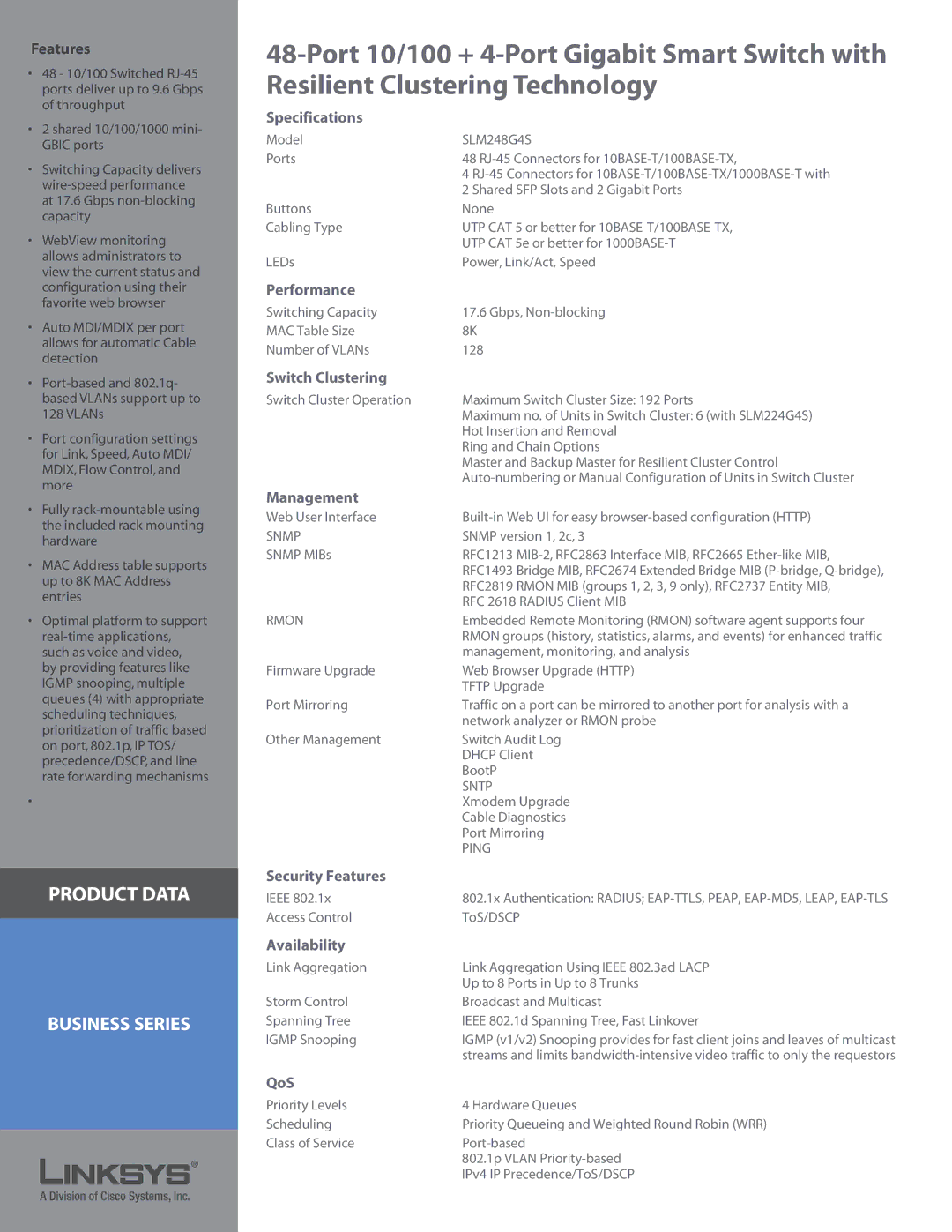SLM248G4S specifications
The Linksys SLM248G4S is a versatile managed switch designed for small to medium-sized networks, delivering robust performance and advanced features. As part of the Linksys business-class networking equipment, the SLM248G4S stands out with its 24 Gigabit Ethernet ports, providing ample connectivity for various devices and ensuring swift data transfer rates. This switch operates at Layer 2, facilitating the management of local area networks (LANs) and optimizing network performance through features that enhance efficiency and control.One of the standout features of the SLM248G4S is its VLAN (Virtual Local Area Network) support. This technology allows network administrators to segment network traffic, improving security and reducing congestion by logically grouping devices irrespective of their physical locations. With support for up to 64 VLANs, users can easily customize and manage their network, facilitating better bandwidth utilization and enhanced performance.
The SLM248G4S also incorporates Quality of Service (QoS) features, which prioritize network traffic to ensure that critical applications receive the bandwidth they require. This is particularly beneficial in environments where voice and video traffic are prevalent, as it reduces latency and improves overall user experience. Additionally, Linksys’s support for Spanning Tree Protocol (STP) minimizes the risk of network loops, allowing for reliable redundancy and failover capabilities.
Security is a top priority in any network, and the SLM248G4S offers multiple security features to safeguard sensitive data. It supports MAC address filtering and port security, which restrict access to authorized devices and enhance the overall integrity of the network. Furthermore, the switch includes advanced monitoring capabilities, enabling network administrators to track performance and troubleshoot issues effectively.
In terms of management, the SLM248G4S provides a user-friendly web-based interface, simplifying configuration and monitoring. It supports SNMP (Simple Network Management Protocol), allowing for easy integration with existing network management tools.
Robust and reliable, the Linksys SLM248G4S is an essential component for businesses looking to enhance their network infrastructure with a managed switch that combines security, performance, and flexibility. Its array of features and technologies make it a suitable choice for organizations looking to optimize their network operations while ensuring seamless connectivity and data integrity. With Linksys’s reputation for quality and performance, the SLM248G4S is a sound investment for any growing business looking to expand and manage its network efficiently.

